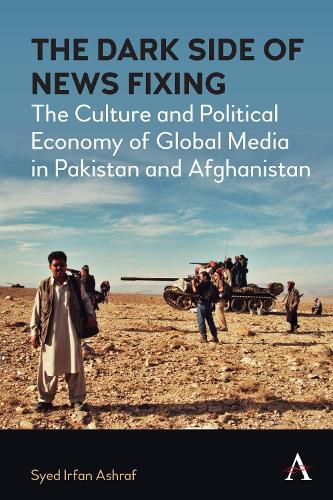Readings Newsletter
Become a Readings Member to make your shopping experience even easier.
Sign in or sign up for free!
You’re not far away from qualifying for FREE standard shipping within Australia
You’ve qualified for FREE standard shipping within Australia
The cart is loading…






This book provides a local journalist’s perspective on a four-decade long regional contribution to global news production. It shows how the fixers’ risky news pursuits made possible for global media to access distant regions and dangerous caves on Pakistan and Afghanistan borders, causing unprecedented deaths of the local reporters in the context of the U.S-led war on terror. The book analyzes the fixer as a role in its relationship with militarization. It is not a coincidence that fixers become valuable to commercial media only during the height of violence or crises. Emerging under conditions of scarcity or war, the value of this role, in turn, is intrinsically tied to the fear of extinction. It is this vulnerability or perceived expendability- imposed by the need to find work-that binds fixers in a symbiotic relationship with global market and global war. This book, then, serves as a vantage point from which one can clearly see the connection between the regional wars and commercial media, as well as local journalists’ transformation into daily wage earners in a global media shift toward neoliberalism.
$9.00 standard shipping within Australia
FREE standard shipping within Australia for orders over $100.00
Express & International shipping calculated at checkout
This book provides a local journalist’s perspective on a four-decade long regional contribution to global news production. It shows how the fixers’ risky news pursuits made possible for global media to access distant regions and dangerous caves on Pakistan and Afghanistan borders, causing unprecedented deaths of the local reporters in the context of the U.S-led war on terror. The book analyzes the fixer as a role in its relationship with militarization. It is not a coincidence that fixers become valuable to commercial media only during the height of violence or crises. Emerging under conditions of scarcity or war, the value of this role, in turn, is intrinsically tied to the fear of extinction. It is this vulnerability or perceived expendability- imposed by the need to find work-that binds fixers in a symbiotic relationship with global market and global war. This book, then, serves as a vantage point from which one can clearly see the connection between the regional wars and commercial media, as well as local journalists’ transformation into daily wage earners in a global media shift toward neoliberalism.